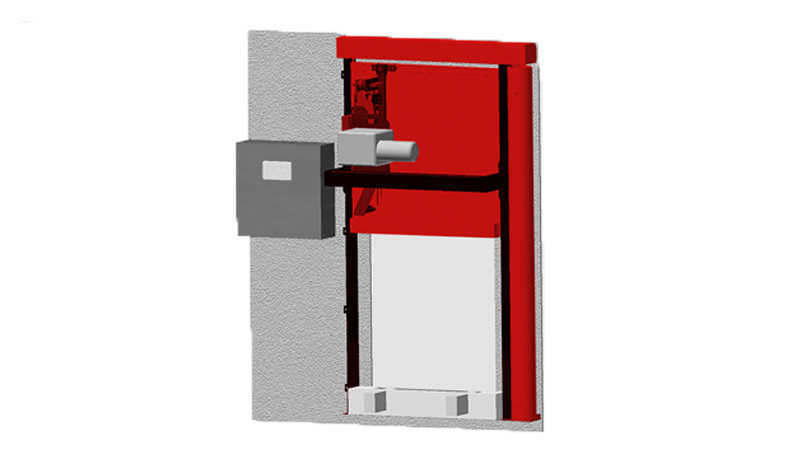SYSTEEM: BR 100 (OOK MET SNELLOOPFUNCTIE)
| Type | Brandbeveiligingsafsluiting in het verloop van baangebonden transportsystemen |
| Bewijs | ETA-16/0851 Europese technische beoordeling (BR 100 EU) | Z-6.6-2089 Algemene bouwvergunning/algemene typegoedkeuring (BR 110 D) | VKF Technische informatie nr. 32801 (BR 100 E) |
| Richting van sluiting | van boven naar beneden | van beneden naar boven | van links naar rechts | van rechts naar links | horizontale dubbele vleugelsluiting naar het midden |
| Brandweerstand | Tot EI2 90 | getest volgens EN 1366-7:2004 | geclassificeerd volgens EN 13501-2:2007 |
| Sluitingscycli | Tot C5 | 200.000 sluitcycli | geclassificeerd volgens DIN EN 13501-2:2007 |
| Heropenen | gemotoriseerd of handmatig |
| Transportsystemen | Belt conveyor technology | Suspension chain conveyor technology | Roller conveyor technology | Elektrisch monorailsysteem | Stroom & Vrij |
| Zichtbare oppervlakken | Gegalvaniseerd, RAL |
Afmetingen en structuur van het systeem
De specificaties van de afzonderlijke productversies met betrekking tot classificatie, systeemgrootte en vereiste wandkwaliteit van de BR 100-serie zijn te vinden in de respectievelijke gegevensbladen.
De inbouwsituatie moet voldoen aan de bouwvoorschriften van het land van installatie. De brandwerendheid van een plafond- of wanddraagconstructie en de aangrenzende onderdelen moet ten minste overeenkomen met die van de brand- en/of rookwerende afsluiting/brand- en/of rookwerend gordijn. De stabiliteit en bruikbaarheid van de aangrenzende wanden en onderdelen moet worden aangetoond onder algemene omgevingsomstandigheden en in geval van brand. Zie ook de opmerkingen over de standaard draagconstructie in EN1366-7:2004 of EN1363-1:2020. Het brandbeveiligingssysteem mag geen andere extra belasting ondervinden dan zijn eigen gewicht, zelfs niet in geval van brand.


